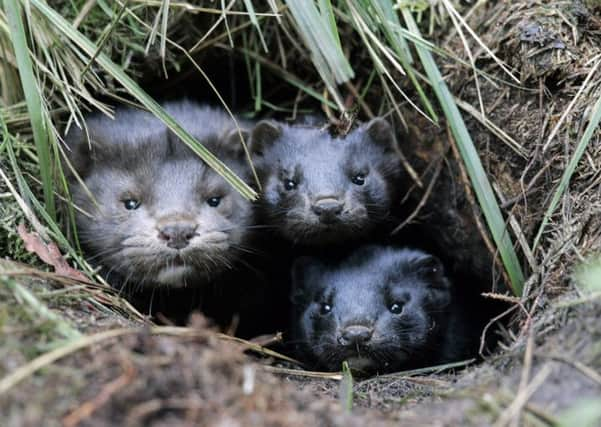£6.4m cost of beating mink menace in Western Isles


The campaign, which has cost £6.4 million over 13 years – around £3,000 a mink – is already reaping rewards, with some species of wader birds showing signs of recovery.
Most of the cost was met by Scottish Government agency Scottish Natural Heritage (SNH), with small contributions from outside bodies, including Comhairle nan Eilean Siar and Highlands and Islands Enterprise.
Advertisement
Hide AdAdvertisement
Hide AdThe predators, escapees from onetime fur farms on the islands, had put at risk the area’s biodiversity by eating nesting wader birds’ eggs and preying on local wildlife.
The Arctic tern, common tern, little tern, black-throated diver, red-throated diver, corncrake, dunlin and ringed plover were under serious threat.
SNH has announced that just a few dispersed mink may now be left on Lewis and Harris as the drive to trap and remove the non-native predator reaches its final stretch. The Hebridean Mink Project (HMP) has run since 2001. In that time 2,200 mink have been caught and taken off Lewis, Harris and Uist.
Computer models suggest mink could be eradicated by the end of the year, although 2017 is a more likely date.
HMP manager Iain Macleod believes the project has operated the largest trapping dataset in Europe. He said: “All the computer modelling does is add exhaustive support to the impression held by the project’s staff, namely that the population of mink in Lewis and Harris is now extremely small.
“All our efforts are now focused on the few remaining individuals and their eradication; the last two years of the project will allow us to achieve that.We are looking for information from the community and for volunteers to help us with our new electronic trap system.”
The project uses so-called “mink police”, small waterproof units attached to the live catch cage traps which are activated when a mink is trapped inside.
The project team works with a network of 7,500 cage traps which are permanently sited. Twelve trappers walk an allocated route of up to 20km per day, each servicing up to 30 traps.
Advertisement
Hide AdAdvertisement
Hide AdMink are non-native and have caused serious declines among ground-nesting seabird and wader species on the islands. However, thanks to the work of the HMP, some tern colonies are showing signs of recovery.
A spokesman for the Taxpayers Alliance said the publicly funded project was worthwhile.
He said: “This effort has been an essential exercise, and yes, it had to be done at considerable expense. We all learned our lesson that mixing an aggressive non-native species with our own native wildlife was a bad idea.”
SEE ALSO